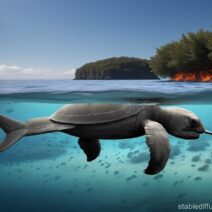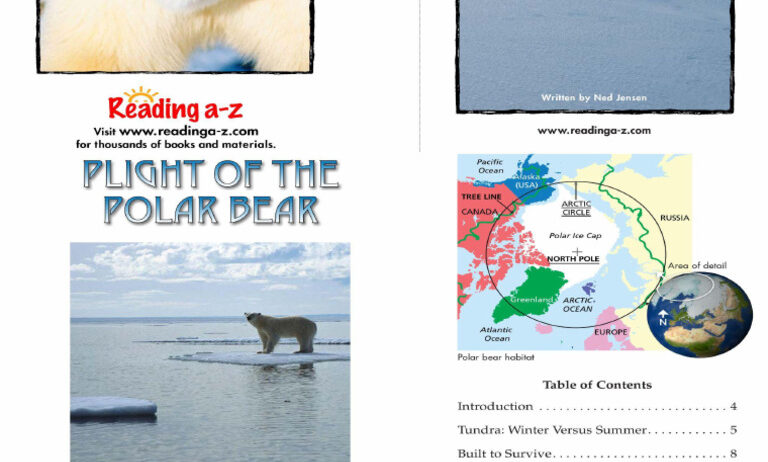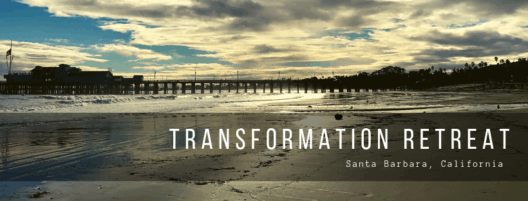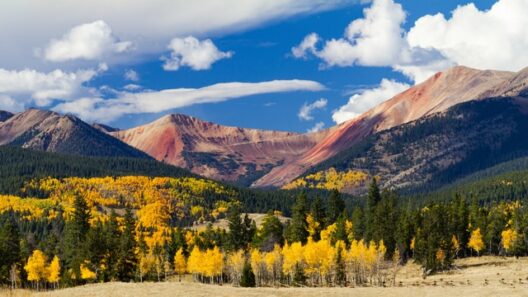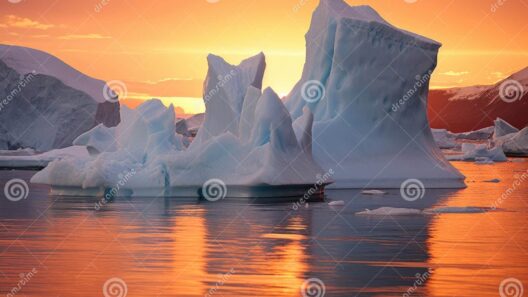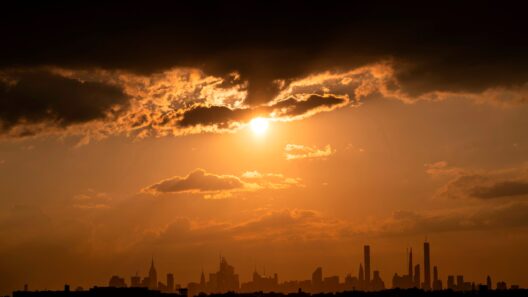The polar bear, a majestic creature that once roamed the Arctic expanses with grace, now finds itself at the nexus of a dire ecological crisis. The profound impact of climate change on their existence has rendered them an emblem of global warming’s ravaging effects. This exploration delves into the multifaceted challenges faced by polar bears, illustrating their precarious plight and the broader implications of their diminishing habitat.
The habitat of the polar bear, characterized by vast stretches of sea ice, is undergoing alarming transformations. Climate change, primarily driven by anthropogenic greenhouse gas emissions, has led to an unprecedented thawing of ice caps. As the planet warms, an estimated 13 percent of summer sea ice volume in the Arctic is lost per decade. This erosive phenomenon is not merely a statistic; it translates into diminished access to the polar bear’s primary prey, seals, which rely on sea ice for resting and breeding.
Polar bears, classified as marine mammals due to their dependency on the ocean and its ice, require stable ice cover to hunt effectively. The disintegration of sea ice forces these bears to swim longer distances in search of food, leading to increased energy expenditure and heightened mortality rates. Consequently, underweight and malnourished bears are becoming increasingly common. Observational data suggest that the decline in body condition correlates with lower reproductive success, presenting a dire threat to polar bear populations.
Furthermore, the changing Arctic environment significantly disrupts polar bear behavior and communal structures. Polar bears, typically solitary creatures, rely on traditional knowledge passed through generations for successful hunting. As their environment fluctuates unpredictably, this cultural transmission becomes increasingly compromised. Compounding this issue, climate change fosters invasive species, which further disrupts the balance in ecosystems that polar bears have thrived in for millennia.
The plight of the polar bear encompasses more than mere survival; it serves as a microcosm of global ecological peril. The losses felt by polar bear populations reverberate throughout ecosystems, highlighting a significant aspect of climate change: the ripple effects on biodiversity. The decline of these apex predators signals a disturbance that can cascade down the food web, threatening species from seals to various marine organisms, thus amplifying the urgency of the crisis.
Moreover, the socio-political implications of polar bear conservation unfold before us. As the Arctic ice melts, newly accessible regions attract industrial exploitation, further jeopardizing the delicate balance of this habitat. Increased shipping traffic, oil drilling, and mineral extraction present direct threats to the polar bears’ environment, posing the risk of oil spills, habitat destruction, and heightened competition with human enterprises. Consequently, the debate surrounding polar bear conservation intersects with broader discourses on environmental justice, indigenous rights, and global commerce.
Indigenous communities, who have coexisted with polar bears for centuries, are directly impacted by the changing environment. Traditional hunting practices, reliant on stable ice patterns, are faltering, leaving these communities grappling with existential challenges. Their cultural heritage intertwined with the polar bear, these communities advocate for a unified approach to conservation that respects both ecological integrity and their ancestral knowledge. Such a collaborative model emphasizes the importance of localized conservation efforts in combating global warming’s repercussions.
To mitigate these challenges, a comprehensive conservation strategy is paramount. This approach must focus on curtailing greenhouse gas emissions on a global scale. Policy frameworks, such as the Paris Agreement, aim to limit global warming by reducing emissions; however, concrete actions are required at both the governmental and individual levels. Advocacy for renewable energy sources, enhancement of carbon sinks, and a shift towards sustainable practices can collectively contribute to reversing the trajectory of climate change.
In addition, habitat protection must be prioritized. Establishing and enforcing marine protected areas (MPAs) would provide crucial refuge for polar bears and their ecosystems—a sanctuary amidst the looming threat of industrial encroachment. Research and monitoring initiatives must also be rigorously developed to better understand polar bear populations and their migratory patterns, enabling informed decision-making in conservation efforts.
Public engagement plays a pivotal role in elevating the discourse surrounding polar bears and climate change. Through education and awareness campaigns, individuals are encouraged to recognize the interconnectedness of their actions and the consequences faced by polar bears. Engaging communities, facilitating discussions, and promoting eco-conscious practices can galvanize collective action, fostering a critical mass of support for polar bear conservation.
The narrative of the polar bear serves as a stark reminder of the fragility of our planet’s ecosystems. Their plight is not isolated but instead a reflection of a broader environmental calamity. Each polar bear that suffers, each ice cap that recedes, speaks to a global urgency for cohesive action against climate change. The future of the polar bear and the health of our planet hinge upon a unified commitment to sustainable living, preservation of biodiversity, and responsible stewardship of natural resources. As stewards of the Earth, we must advocate for the voiceless before it is too late, ensuring a legacy of resilience for future generations.


